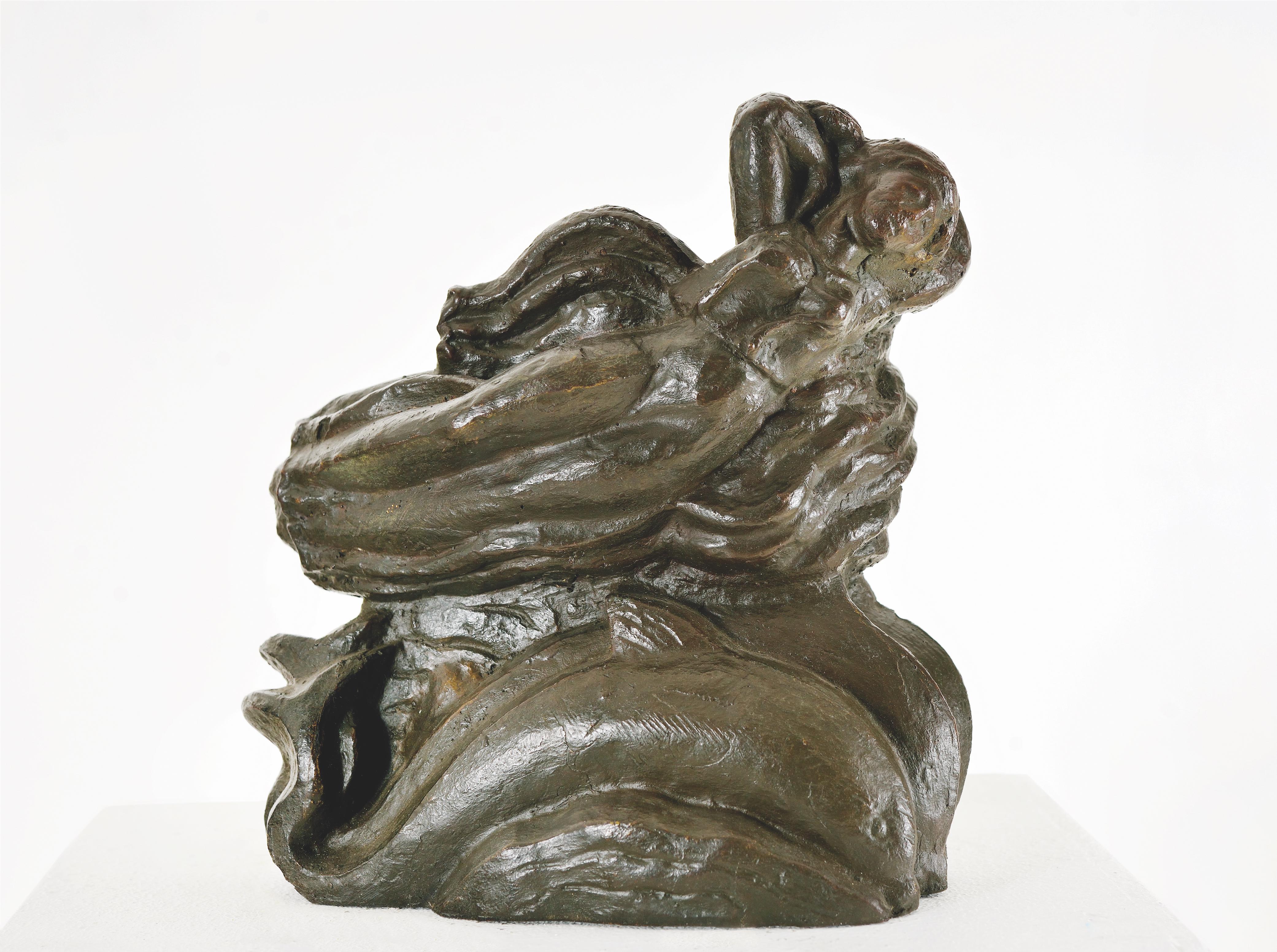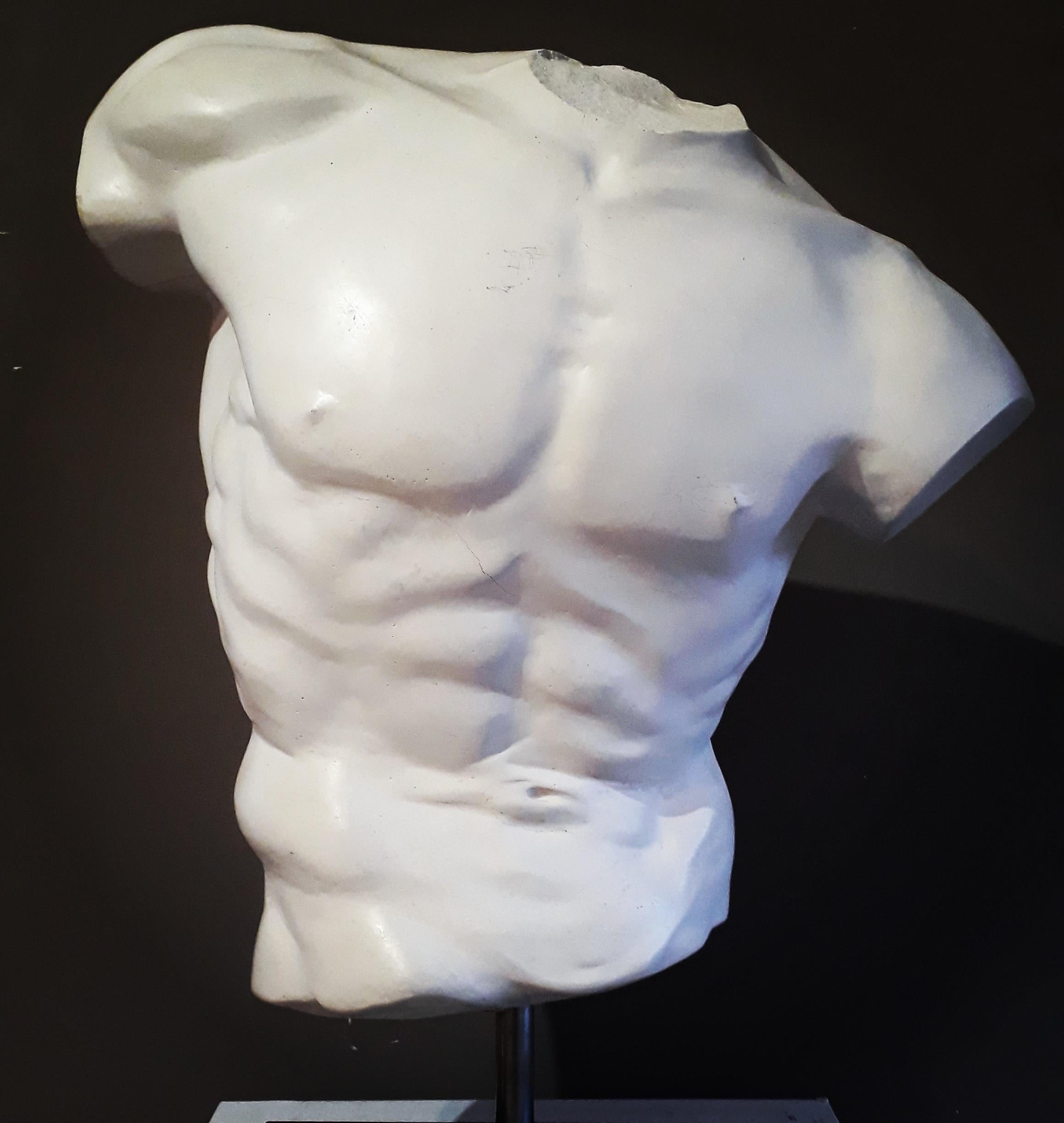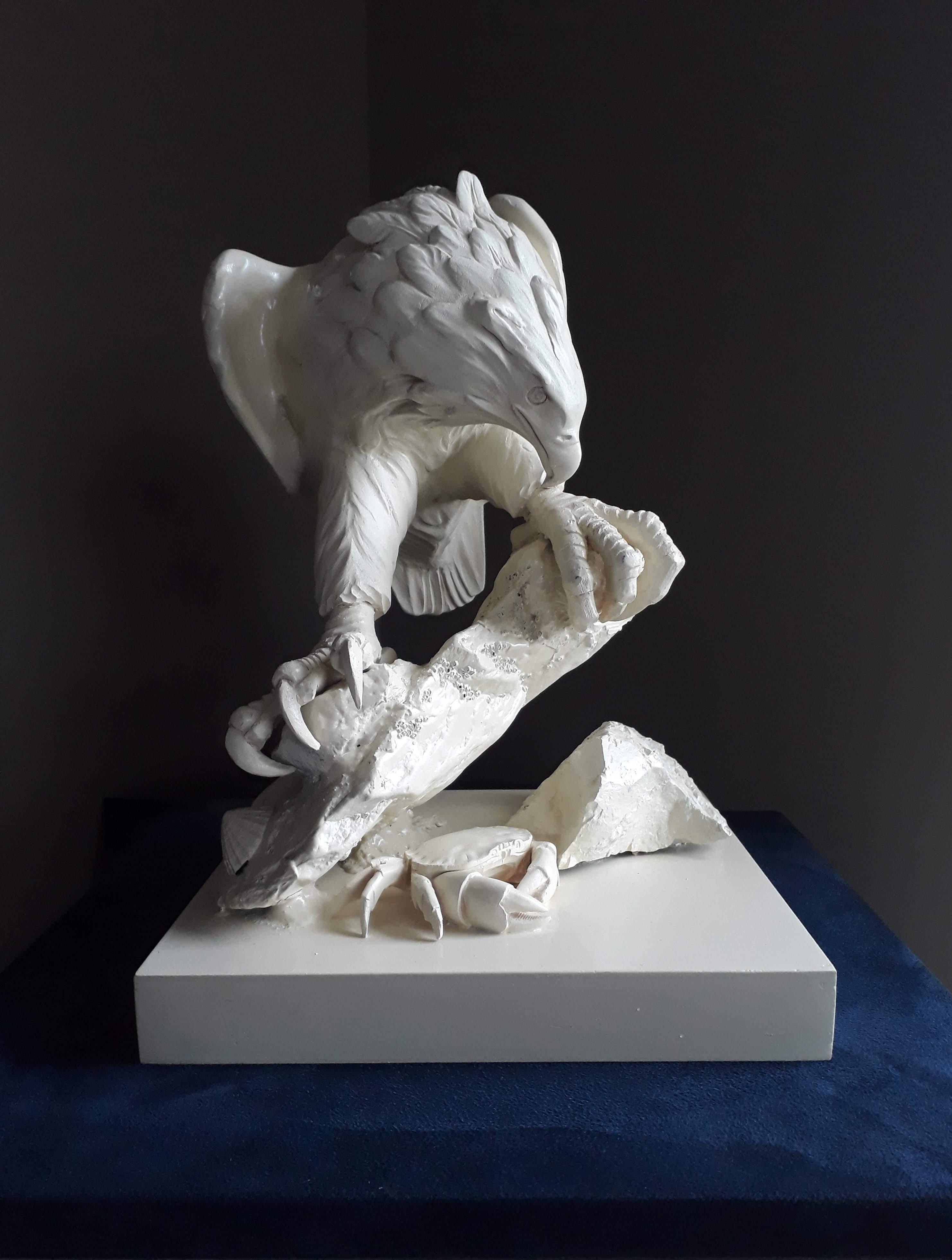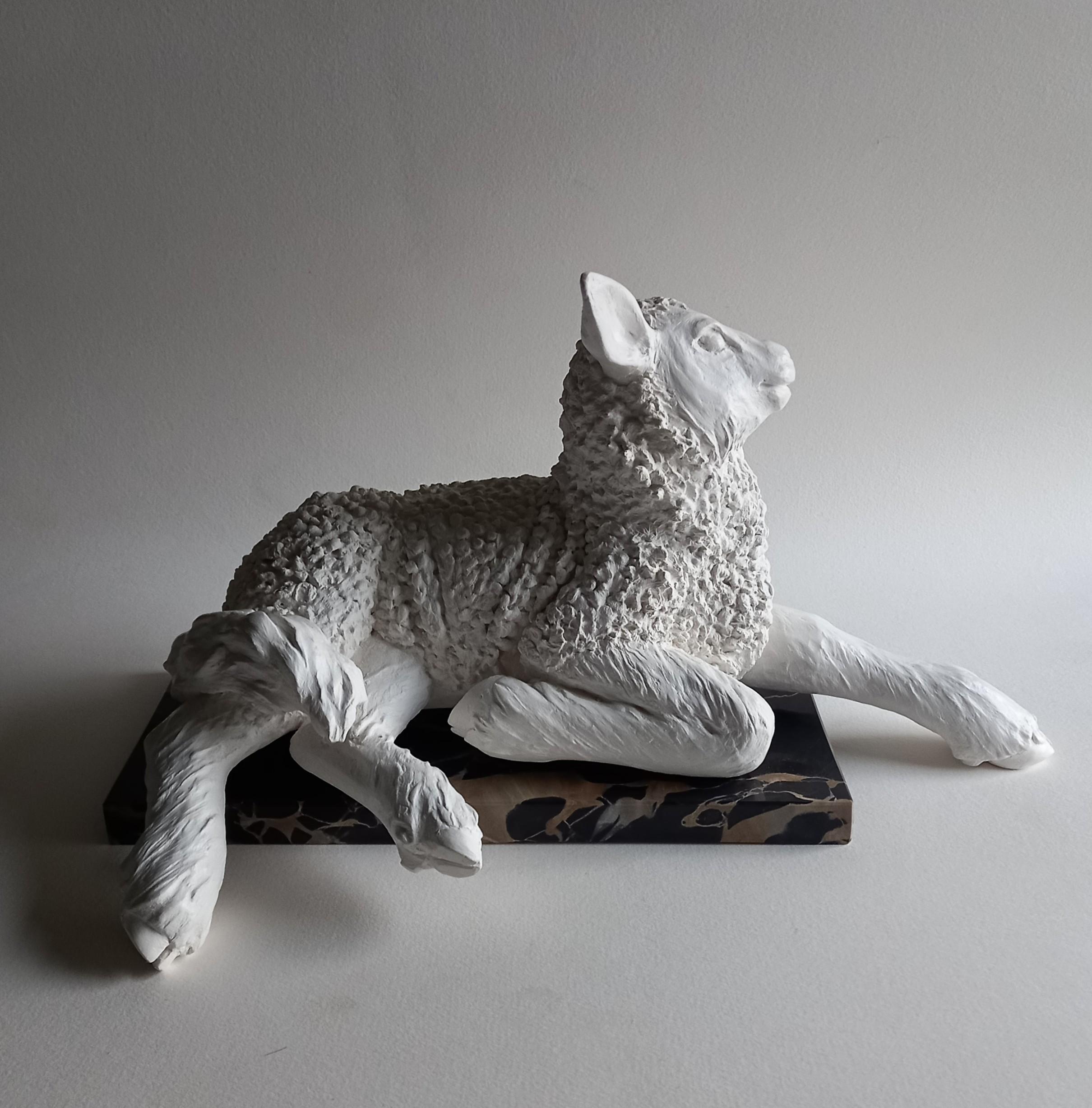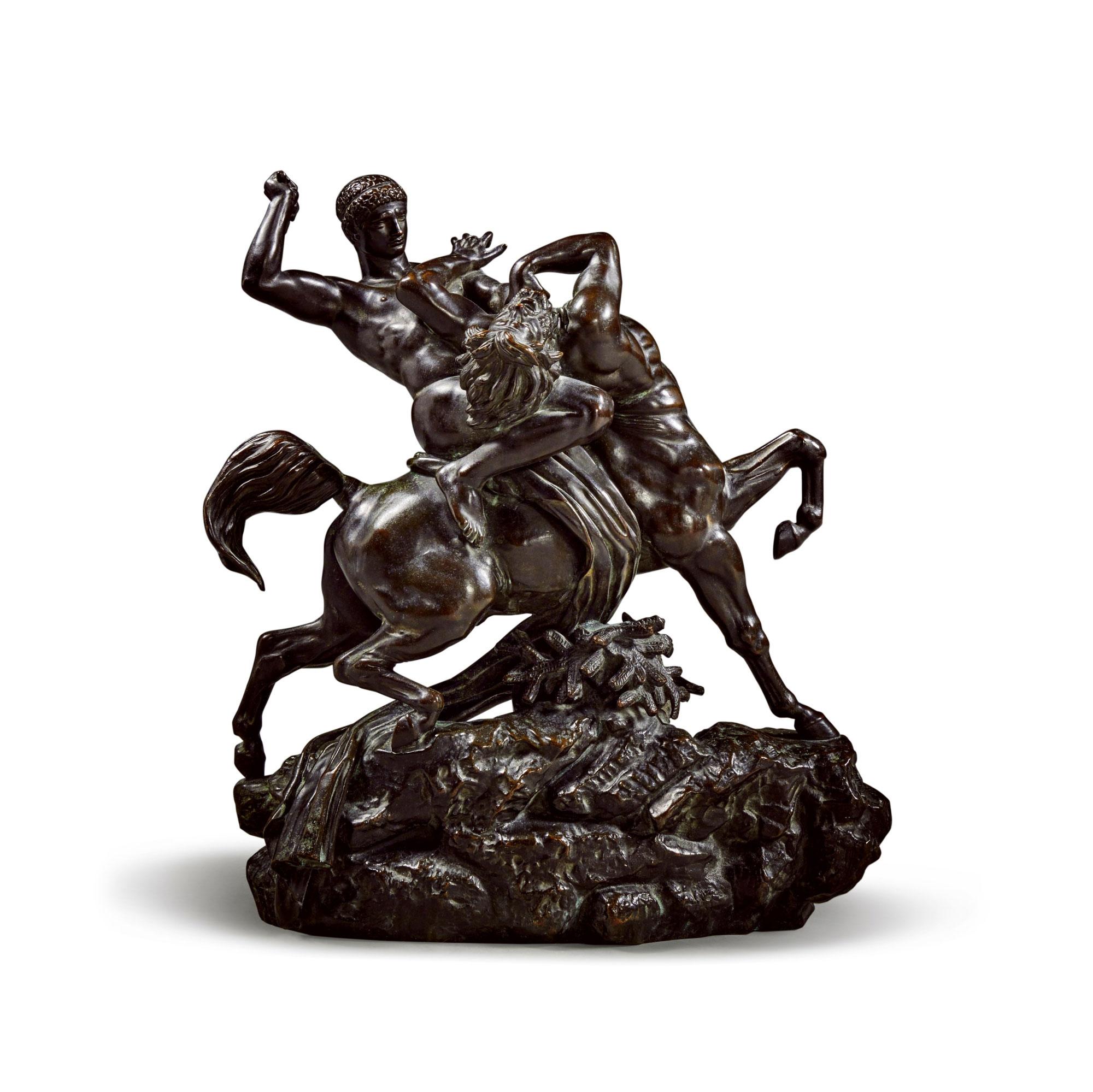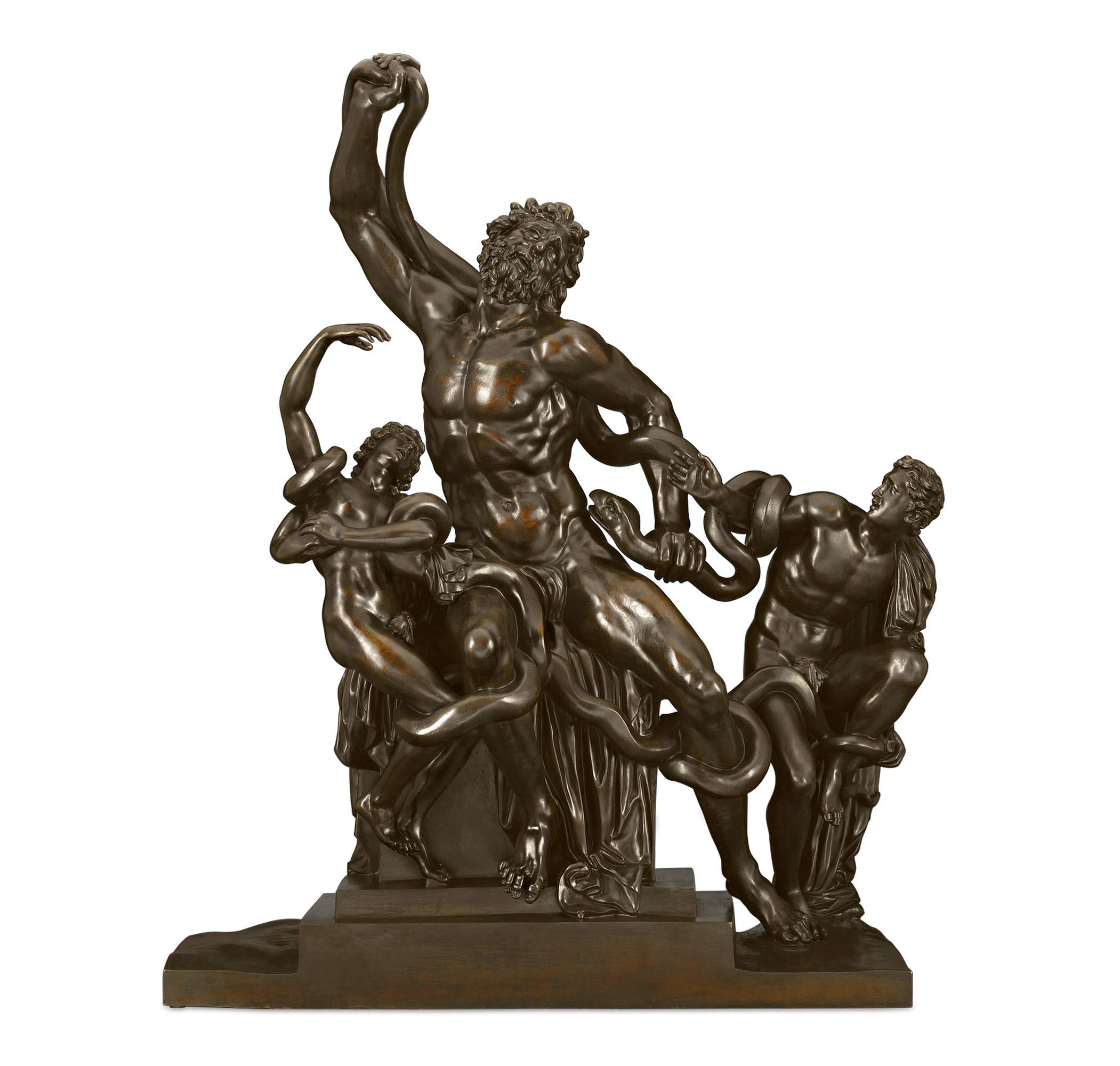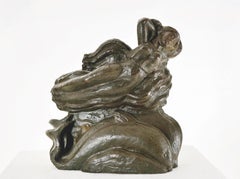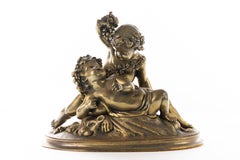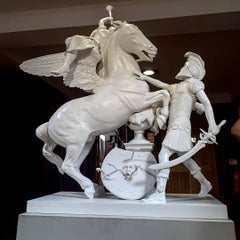
A Monumental Orientalist Bronze Sculpture "Cavalier Arabe" After Emile Guillemin
View Similar Items
Want more images or videos?
Request additional images or videos from the seller
1 of 17
A Monumental Orientalist Bronze Sculpture "Cavalier Arabe" After Emile Guillemin1950
1950
About the Item
- Creation Year:1950
- Dimensions:Height: 44 in (111.76 cm)Width: 32 in (81.28 cm)Depth: 16 in (40.64 cm)
- Medium:
- Movement & Style:
- After:Émile Guillemin (1841 - 1907)
- Period:
- Condition:Wear consistent with age and use.
- Gallery Location:New York, NY
- Reference Number:1stDibs: LU115128714452
About the Seller
5.0
Gold Seller
These expertly vetted sellers are highly rated and consistently exceed customer expectations.
Established in 1980
1stDibs seller since 2019
13 sales on 1stDibs
More From This SellerView All
- Rare and Important Italian Alabaster Bust Sculpture of Jesus Christ, C. 1860Located in New York, NYA rare and important Italian alabaster bust sculpture of Jesus Christ, C. 1860 A modeled bust of Holy Christ wearing a crown of thorns, exceptional...Category
19th Century Baroque Figurative Sculptures
MaterialsAlabaster
- La Chasse Au Lion, The Lion Hunt, Monumental Bronze Sculpture after Aime MilletLocated in New York, NY"La Chasse Au Lion", "The Lion Hunt", A Monumental French Orientalist Bronze Sculpture after Aime Millet (1818–1891), circa late 19th century. This bronze s...Category
Late 19th Century Figurative Sculptures
MaterialsBronze
- Rare Patinated Bronze Sculpture of Benjamin Franklin, by A. Carrier-BelleuseBy Albert-Ernest Carrier-BelleuseLocated in New York, NYAlbert-Ernest Carrier-Belleuse (France, 1824-1887) A rare seated bronze statue of Benjamin Franklin holding his walking stick and hat, with a book in his ri...Category
19th Century Academic Figurative Sculptures
MaterialsBronze
- A Monumental French Patinated Bronze Bust of William Shakespeare, after HoudonBy F. Barbedienne FoundryLocated in New York, NYA Monumental French Patinated Bronze Bust of William Shakespeare, after Houdon, by F. Barbedienne Foundry, circa 1870. Masterfully and realistically sculpted in solid bronze, this b...Category
19th Century Figurative Sculptures
MaterialsBronze
- A Rare Gilt and Patinated Bronze Jockey on A Horse, circa 1875By Isidore Jules BonheurLocated in New York, NYIsidore-Jules Bonheur (French, 1827–1901) A Rare Gilt and Patinated Bronze Jockey on A Horse, circa 1875. Introducing a truly exceptional and highly so...Category
19th Century Figurative Sculptures
MaterialsBronze
- Exceptional French Orientalist Bronze Sculpture "Le Marchand d' Armes Turc"By G. GueytonLocated in New York, NYAn Exceptional French Orientalist Bronze Sculpture "Le Marchand d' Armes Turc" (The Turkish Arms Dealer) by G. Gueyton, (French, 19th Century) Discover the allure of the Orient thr...Category
19th Century Figurative Sculptures
MaterialsBronze
You May Also Like
- Maqueta las toninasLocated in Miami, FLMaqueta las Toninas, 1944 BMY-022, 1970 Edition 1/25 Bronze 22 x 22 x 10 cm 8.6 x 8.6 x 3.9 in ABOUT THE ARTIST Narvaez was born in Porlamar, Venezuela, in 1905; he was the fifth son of eleven siblings; his parents were Jose Lorenzo Narvaez and Vicenta Rivera. Don José Lorenzo, a multifaceted and creative man, sowed the seed of creativity in his son. “My father did not fit in with his fantasies of cabinetmaker, bricklayer, master builder, and self-taught architect.”1 From an early age, Francis was led to the artistic activity, he traced, carved, made replicas of the furniture and the saints restored by his father. In 1920 he obtained his first professional assignment, a San Rafael for the Church of Carupano, and, in 1922, his father authorized him to travel to Caracas to pursue his studies as an artist. He studied at the atelier of Marcos Castillo, at of the Angel Cabre y Magriña and at the Academy of Fine Arts in Caracas, where he was introduced to the painters and intellectuals of the time. In 1928 he presented his first solo exhibition at the Club Venezuela. With the money raised from the sale of the works and the support of Monsignor Sosa, and the Ministers Centeno Grau and Arcaya, he studied in Paris on a scholarship. Once there, he enrolled at the Académie Julian, where Tito Salas, Cristóbal Rojas and Arturo Michelena had also studied. It was in Paris where, unable to work in wood, he turned to stone carving. “In Paris, I didn’t have wood, so I carved a lot in stone (…), when there were demolitions I purchased chunks of stone, I would take them to the workshop and carve them.”2 His first attempts at volumetric sculptures and painting in plain colours, linked to the thematic of American miscegenation and Creole reality, can be traced back to that first trip to Paris. During his stay in the French city, Arturo Uslar Pietri, Alfredo Boulton, and Finita Vallenilla supported the artist both financially and logistically, and in February of 1930, the trio of friends arranged another exhibition for him at the Club Venezuela. Narvaez describes his exhibition as follows: “(…) in it I feel that the sculptural work is more my own, done with more assurance, a response to my pursuit of large planes, stylisation and synthesis.”3 By then, as Boulton himself noted in his book about the artist, Narvaez departed from most of the artistic traditions that prevailed by that time in Venezuela. In 1931 he returned to Caracas and established his atelier at the Barrio Obrero in Catia. The atelier became the hub of the intellectual life of the time. “In those years, the atelier of Francisco Narvaez was the hub of the greatest Venezuelan hope. Nothing comparable to it can be found either before or since.”4 From that year onwards, exhibitions, projects, trips, and awards we multiplied. He was awarded the President of the Republic of Venezuela Prize, the National Sculpture Prize of the 1st Official Venezuelan Art Salon, and the John Boulton Prize of the 3rd Annual Venezuelan Art Salon; for the Military Academy, he produced a spectacular relief entitled La Patria. In 1945, commissioned by the architect Carlos Raúl Villanueva, he produced two groups of sculptures known as Las Toninas, both located in the O’Leary Square. There, as he himself states, he incorporates some baroque patterns into the figures to the source itself: “It is a work of balance between the decorative requirements and the sculpture of planes and angles.”5 In 1948 he was awarded the National Painting Prize. In the same year, he was called upon by the architect Carlos Raul Villanueva to participate in the project for the arts integration in the Universidad Central de Venezuela. Francisco Narvaez’s public output continued with works such as the statue of Fermín Toro, La Educacion, La Ciencia, three murals (produced by María Luisa Tovar) for the Instituto de Medicina Experimental, El Cristo; el Atleta, the equestrian statue of General Rafael Urdaneta. In 1953 he was appointed Director of the School of Plastic and Applied Arts, and in July of the same year, he exhibited “Francisco Narvaez, Maderas, Piedras y Bronces” (Francisco Narvaez, Woods, Stones and Bronzes) at the Museum of Fine Arts. Narvaez is, unquestionably, one of the great Venezuelan sculptors, his work goes through various stages and interests; as the art world evolves, the artist does not remain in his initial scopes of work. His creations are not imposed by the prevailing trends or fashion but do evolve by experimenting with new materials and interests. When one peruses the artist’s lengthy list of exhibitions, commissions, and awards, it is worth remembering the Narvaez who embark on his career as a child and who, overcoming obstacles, knew how to make the most of his curiosity. He did not settle for living off his successes. He did not remain stagnant as many creators of his environment did. Narvaez managed to understand the changes in the history of art around him. We must not overlook the fact that Francisco Narvaez is an artist amid all the changes occurring in the art world. He moves from the classics to the great transformations in the art world. It is the Europe of Picasso, Braque, Arp. He observes, he is aware of what is happening in the centres of the world of art, but between his craft and his sensitivity, the result is NARVAEZ, his stamp, and his identity. Francisco Narvaez comes from tradition, and his first stage is linked to the classics, to the exploration of his heritage, but always with his very own language. Throughout his prolific career, he knew how to remain true to himself, without disregarding the influences of his surroundings or his artistic interests: his ability as a sculptor, his selection of materials, whether they were wood, stone or bronze; his choice of the subject of his work…His mastery and great craftsmanship are a constant that over time have made him a leading player in the history of contemporary Venezuelan and world art. From his beginnings, no subject was foreign to him. His paintings, drawings, aquarelles, and sketches are testimony to his prolific output. Among his themes are portraits, our traditions, still lifes, and landscapes. Narvaez is an artist who represents his time. Later, he evolved towards purer and simpler forms, abandoning figurative art for short periods. In 1956 he declared to the newspaper El Nacional: “Every day I am freeing myself, it is a soul that frees itself from the ephemeral wrappings of the circumstantial always, as well as from the inevitable weight of the anecdote. This second stage of my work is remarkably close to abstractionism, even if there are still certain figures or figurations in the sculptures that I will shortly be showing. However, pure, and absolute abstractionism, it will treat the form itself as the sole reason for its existence on the plane of artistic excellence.”6 The artistic development was his professional life. Each period of his life as an artist, he went one step further, searching, solving, seeing plenty of things and understanding how diverse expressions were transforming themselves. His hands followed his gaze and his mind, always inquisitive. He added movement to the volumes. Arturo Uslar Pietri, “Formas Nuevas”, Cromotip editions, 1956 “Francisco Narvaez is a path: the path that Venezuelan sculpture...Category
1940s Baroque Figurative Sculptures
MaterialsBronze
- 19th Century French Bacchanalian BronzeLocated in San Antonio, TX19th Century French Bacchanalian Bronze in the 18th century style depicting two Putti, in the manner of Clodion. One putto reclines while another feeds it grapes. The Patina is worn ...Category
Late 19th Century Baroque Figurative Sculptures
MaterialsBronze
- Perseus and Fame proclaiming the birth of PegasusLocated in Oswestry, GBThis neo-classical style sculpture is of Perseus the son of Zues and Danae is ordered by King Polydectes to slay the gorgon Medusa. With the gift of a polished shield from Athena, a ...Category
Early 17th Century Baroque Figurative Sculptures
MaterialsBronze
- Discus Thrower's TorsoLocated in Oswestry, GBThis artwork emulates the classical statues from the ancient world, particularly with the head broken off at the base of the neck if carved in marble. In fact I went to the lengths o...Category
17th Century Baroque Figurative Sculptures
MaterialsGranite, Bronze
- White tailed sea eagle and crabLocated in Oswestry, GBThis white tailed sea eagle is depicted here on a rock on the shore of a remote wild Scottish Isle (Outer Hebrides). Hiding beneath the rock is a brown crab...Category
16th Century Baroque Figurative Sculptures
MaterialsBronze
- LambLocated in Oswestry, GBThis lamb is also featured in my statue of Saint David. It conveys such character and gentleness that I decided to present it as a sculpture in its own right. I lays on a base of bla...Category
2010s Baroque Figurative Sculptures
MaterialsMarble, Bronze
$4,749
